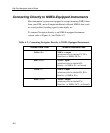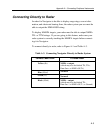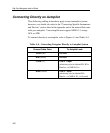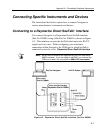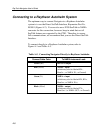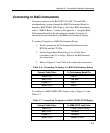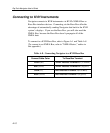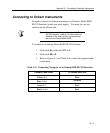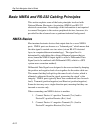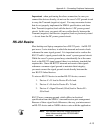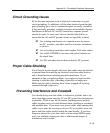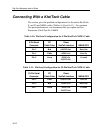
RayTech Navigator User’s Guide
A-12
Basic NMEA and RS-232 Cabling Principles
This section explains some of the basic principles involved with
National Marine Electronics Association (NMEA) and RS-232
electrical connections. Knowledge of this information is not required
to connect Navigator to the various peripheral devices; however, it is
provided for the advanced user as pertinent technical background.
NMEA Basics
Most marine electronic devices that output data do so over NMEA
ports. NMEA ports are known as a “balanced pair,” which means that
the data signal is carried over two wires (via an RS-422 electrical
layer, in computer/datacom terminology). The signal level is
determined by calculating the voltage difference between the two
wires, hence the NMEA output signal is called a Differential Data
Signal (not to be confused with Differential GPS, which is a GPS
system error correction method).
Differential Data Signals are designed to be error-resistant by keeping
the positive and negative leads close together for the entire cable run.
This means that they both pick up the same levels of noise, which is
ultimately subtracted from the signal, preserving the signal’s data
integrity. NMEA ports typically have four connections (two for each
lead): Transmit (positive/negative) and Receive (positive/negative).
Some devices may use a single-direction port, meaning that they can
transmit or receive only.
When connecting one NMEA device to another:
1. Connect Device A’s positive Transmit (Tx+) lead to
Device B’s positive Receive (Rx+) lead.
2. Connect Device A’s negative Transmit (Tx-) lead to
Device B’s negative Receive (Rx-) lead.



